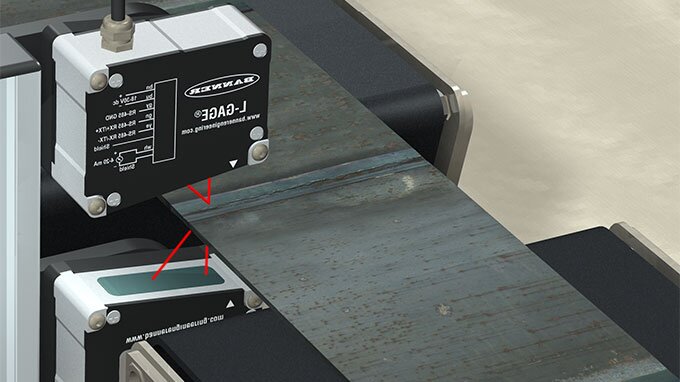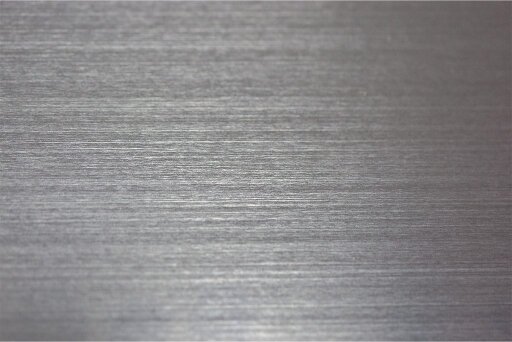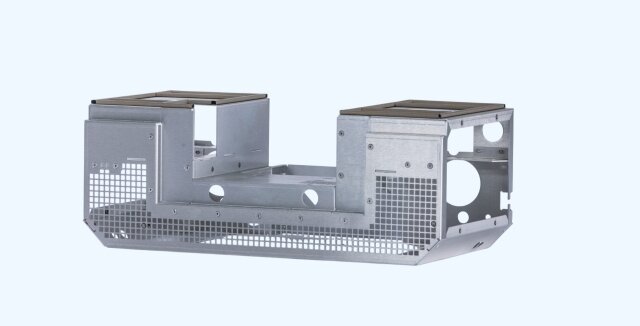Heat, dust, and moisture are common problems in machines, enclosures, and industrial buildings. These problems become more serious when airflow is blocked or restricted. Perforated sheet metal offers a simple and highly effective way to move air while protecting the components behind it.
Perforated panels have another strong advantage: they deliver predictable airflow. A well-designed pattern can reach an open-area ratio above 80%, which allows large volumes of air to pass through with minimal pressure drop. At the same time, the metal keeps its structure and shields the system from impact, debris, and contaminants.

How Perforated Sheet Metal Improves Ventilation?
This section outlines the key engineering factors that shape ventilation performance. Each point shows how hole geometry and layout influence airflow and cooling.
Airflow Through Open Area
Ventilation performance starts with the open-area ratio. This ratio represents how much of the sheet is open space instead of solid metal. A higher ratio supports stronger airflow and reduces air resistance. Industrial designs commonly use open areas between 15% and 80%, depending on the required airflow.
Small holes with tight spacing create stable airflow with fewer turbulence zones. Larger holes pass more volume but reduce filtering ability and may increase noise. Engineers choose the hole diameter, pitch, and layout based on the heat load, airflow direction, and the sensitivity of the protected components.
Natural and Mechanical Ventilation
Perforated metal supports both natural convection and forced-air systems.
In passive systems, warm air rises through the openings and exits the enclosure. This movement reduces hot spots and improves temperature balance without consuming energy. The effect becomes stronger when the open area is large and evenly distributed.
In mechanical systems, perforated panels act as low-resistance intake or exhaust vents. Fans can operate more efficiently because they do not push against blocked surfaces. Lower resistance improves cooling and reduces energy consumption over long operating cycles.
Moisture and Condensation Reduction
Moisture buildup is a common failure cause in electrical and mechanical equipment. Perforated sheet metal helps reduce condensation by improving air exchange. As air circulates, humidity levels remain more stable and less moisture collects inside the enclosure.
In buildings, perforated panels allow walls and ceilings to “breathe.” This reduces condensation in cold weather and improves long-term structural stability. In equipment housings, enhanced moisture control reduces corrosion and protects wiring, PCB assemblies, and sensors.
Secondary Benefits Beyond Ventilation
The following points highlight additional engineering advantages. These benefits make perforated sheet metal suitable for both cooling and protection.
Protection From Dust, Debris, and Contamination
Perforated panels block large particles while allowing airflow. In agricultural equipment, they prevent stones, insects, and crop debris from entering the cooling system. In construction machinery, they keep dust away from radiators and electronics. In industrial enclosures, they protect fans and filters from unexpected impact or foreign objects.
Because the metal remains rigid under vibration, it does not collapse or deform easily. This stability is essential in high-dust or high-impact environments.
Strength and Durability
Metal offers stronger protection than plastic grills or wire mesh. It resists impact, bending, and continuous vibration. With proper material and thickness, perforated sheets maintain their shape even at high open-area levels.
Stainless steel and aluminum panels perform well in outdoor and corrosive environments. They support long service life with minimal maintenance. This durability is why many industries choose perforated metal for engine covers, HVAC housings, power cabinets, and generator enclosures.
Design Flexibility and Aesthetic Value
Perforated sheet metal offers a wide range of patterns: round, square, slotted, and hexagonal. Each pattern supports different airflow and strength needs. Engineers can even use custom patterns or logo shapes to combine function with branding.
Architectural applications benefit from the visual effects created by perforations. Panels can diffuse natural light, create shadow patterns, or act as sunshades. These visual features enhance appearance without reducing airflow performance.
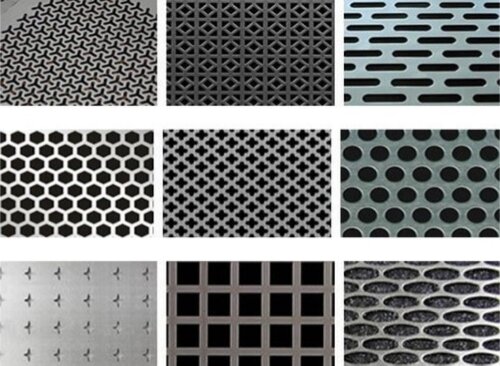
Manufacturing Considerations (DFM)
This section explains the manufacturing choices that influence airflow, flatness, and long-term performance. Each factor helps engineers design perforated panels that are stable, cost-efficient, and easy to produce.
Tooling and Process Options
Perforated sheet metal can be produced by punching, CNC turret punching, or laser cutting.
Punching is the most efficient method for high-volume runs. It creates fast and repeatable hole patterns, but each hit introduces local stress into the sheet. This stress may lead to slight deformation when the open-area ratio is high.
CNC turret punching provides more flexibility in hole shapes and spacing. It allows engineers to mix patterns or adjust pitch based on cooling needs. However, small holes in thick material may require specialized tooling to avoid tool wear or burrs.
Laser cutting offers the highest precision for custom designs or thicker sheets. It maintains hole accuracy and clean edges, especially in stainless steel or aluminum. But laser cutting creates a heat-affected zone (HAZ), which can slightly harden the edges and influence downstream forming.
Panel Flatness and Distortion Control
Perforation removes material and weakens the sheet. As the open area increases, the risk of warping increases as well. Panels with open areas above 50–60% often require additional design controls to maintain flatness.
Engineers use several methods to reduce distortion:
- Increase sheet thickness to regain stiffness
- Add ribs, flanges, or formed edges around the perimeter
- Use selective perforation, leaving solid zones near mounting points
- Reduce hit frequency on turret machines to prevent heat buildup
- Apply flattening operations after punching or forming
Another common issue is bending perforated sheets too close to the hole pattern. When holes sit inside the bend zone, the material stretches unevenly. This can lead to cracks, oval-shaped holes, or reduced airflow performance. A general guideline is to keep perforations at least 2–3 times the material thickness away from a bend line.
Finishing Requirements
Powder coating, anodizing, or chemical treatments protect the sheet from corrosion and extend service life. However, coating thickness can reduce effective open area—especially when hole diameters are small. Thick coatings may partially block edges or cause inconsistent airflow across the panel.
Smooth finishes also make cleaning easier. In dusty or outdoor environments, clogged holes reduce ventilation efficiency. A well-selected surface finish helps the panel stay clean longer and perform consistently.
Stainless steel may require no coating in many environments, but aluminum panels often benefit from anodizing for higher corrosion resistance. Carbon steel usually needs a protective layer to avoid rust, especially in humid or agricultural settings.
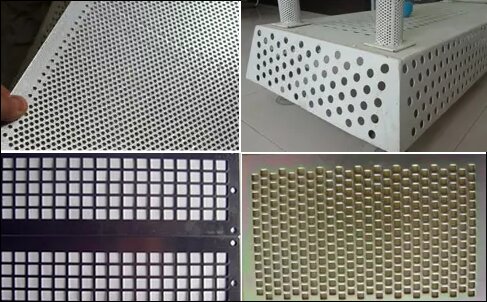
Material and Thickness Selection
This section outlines how material and thickness affect airflow, strength, and long-term stability. Each choice must balance ventilation needs with structural performance and cost.
Material Choices
Perforated sheets are commonly made from aluminum, stainless steel, and carbon steel.
- Aluminum is lightweight and corrosion-resistant. It is suitable for HVAC panels, architectural screens, and electronics enclosures. It supports complex patterns and maintains good flatness.
- Stainless steel offers the most substantial corrosion resistance and withstands harsh environments such as agriculture, marine areas, and chemical exposure. It is preferred when durability and hygiene are critical.
- Carbon steel provides strong mechanical performance at a lower cost. It requires coatings for corrosion protection but offers excellent stiffness, making it suitable for machinery housings and high-impact areas.
Sheet Thickness and Structural Performance
Thickness directly influences the strength and flatness of a perforated panel. Thin sheets allow dense perforations and reduce weight. They are common in indoor enclosures or light-duty applications. However, thin sheets can warp easily when the open-area ratio is high.
Thicker sheets provide better rigidity, but small holes may be more challenging to punch cleanly. Larger hole patterns or stronger tooling may be required. Heat-affected zones from laser cutting also behave differently in thick sheets during forming.
A balanced design considers:
- open area
- bending requirements
- expected impact or vibration
- structural loads
- mounting locations
This ensures the panel stays stable while delivering the needed ventilation.
Edge Treatment and Forming
Edge finishing affects safety, appearance, and corrosion performance.
Sharp edges can cause injury and trap contaminants. Deburring or rounding the edges improves handling and reduces the chance of coating failure at exposed points.
Forming perforated sheets requires careful planning. When holes are near bends, the material becomes weaker and may distort. Engineers often use solid borders around bend zones or increase the bend radius to minimize stress.
Design Flexibility and Visual Applications
This section shows how perforated sheet metal supports both performance and appearance. Each point explains how hole patterns influence airflow, structure, and visual impact.
Pattern Variety for Performance and Aesthetics
- Perforated sheet metal supports many hole shapes, and each shape affects airflow and strength differently.
- Round holes offer the most balanced performance. They reduce stress concentration and produce predictable airflow, which is why they are used in most ventilation panels.
- Hexagonal patterns provide very high open-area ratios and support stronger airflow in compact spaces. They are common in high-output cooling systems or engine covers.
- Slotted patterns help direct airflow in a preferred direction. They also allow higher open-area ratios in narrow panels.
- Square holes create a modern look and provide uniform distribution when visual symmetry is essential.
Light Control and Shadow Effects
Perforated panels do more than move air. They also shape light in architectural and indoor environments.
When used as exterior screens, perforated panels diffuse sunlight and reduce glare. They lower heat gain while keeping air flowing through the building façade. The shadows created by the holes change with the sun, forming a dynamic pattern that increases visual interest.
Indoor applications use perforated panels to soften artificial lighting or reduce noise levels. The combination of ventilation and light control allows one component to serve multiple functions without adding complexity to the overall design.
Conclusion
Perforated sheet metal delivers a reliable balance of airflow, strength, and protection. It allows air to move freely while shielding equipment from dust, debris, and impact. With the correct pattern, material, and thickness, a perforated panel can support high cooling performance without losing structural stability.
Engineers value perforated metal because its behavior is predictable. Hole geometry defines airflow. Material and thickness define strength. Manufacturing choices define flatness and durability. When these factors work together, the ventilation system becomes more stable, more efficient, and easier to maintain.
If you need a perforated ventilation panel for an enclosure, machine, or architectural project, our engineering team can help. Share your drawings, airflow targets, or environmental requirements. We can review your design, suggest open-area ratios, compare hole patterns, and recommend the right material and thickness for stable performance.
Hey, I'm Kevin Lee

For the past 10 years, I’ve been immersed in various forms of sheet metal fabrication, sharing cool insights here from my experiences across diverse workshops.
Get in touch

Kevin Lee
I have over ten years of professional experience in sheet metal fabrication, specializing in laser cutting, bending, welding, and surface treatment techniques. As the Technical Director at Shengen, I am committed to solving complex manufacturing challenges and driving innovation and quality in each project.

